
|   |

|   |
 e-mail: leelakaverivenkat@gmail.com Recapturing golden moments during Golden Anniversary of Kalasamarpana Photos courtesy: Kalasamarpana August 26, 2019 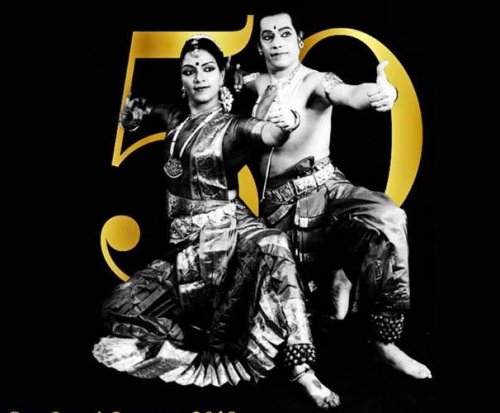 Vasanthalakshmi and Narasimhachari Vasanthalakshmi recounting the guru's ever eager way of trying out changes, gave the example of his Pallaki Seva Prabandham production, where he used the indigenous art form of shadow puppets to show the Palaki with two bearers carrying Shiva to Parvati, his bride, with live dancers also part of the scene. But no matter what the original touches, the core qualities of tradition for the Guru were never negotiable and had to be fully retained. As a consummate musician, his musical scores, in tonal changes, reflected every bodily genuflexion in the dance movement. 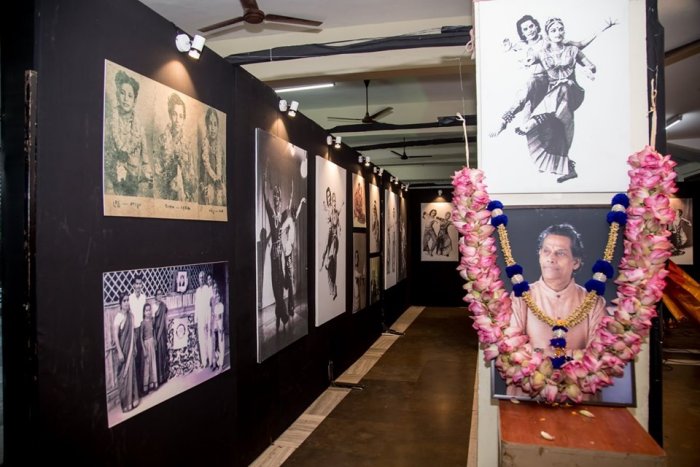 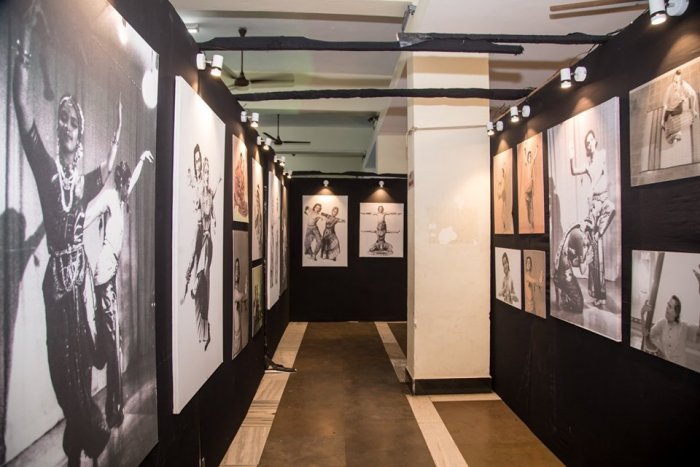 The photo exhibition in the lobby of Narada Gana Sabha on the occasion of Swarnaanjali was a pictorial history in more ways than one - with arresting large sized images capturing frozen moments of an entrancing husband/wife team over a career spread over eventful years with about 35 Natya Natakams produced - years with unexpected twists and turns with the couple nothing if not resourceful. Vasanthalakshmi recollected, her gentle humour a veneer hiding the ache of his absence to mark this function, some of the sudden unforeseen happenings during performances, tided over by the quick-witted couple. Above everything what Vasanthalakshmi's dignified introductions revealed was how the like-minded couple's sense of humour enabled them to face life, which in the beginning was certainly not monetarily prosperous, with equanimity and contentment. Swarnaanjali which presented cameos from past productions of Kalasamarpanam, showed its quality of outreach with the presentation involving artists and dancers of many other organisations who seemed to participate with commitment and desire to make the event a success. Disciples of Anita Guha, of Sheela Unnikrishnan, martial art disciples of VMS Martial Arts trained by Arun Kumar, Vasanth and Madhusudhanan - all participated with total involvement - showing once again the kind of relationship and bonhomie Narasimhachari had fostered and shared with fellow artists. 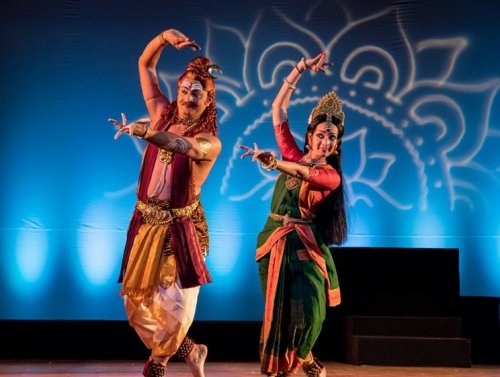 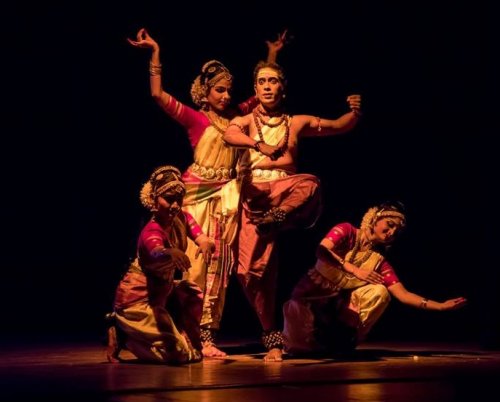 Very fittingly 'Narasimham Bhajegam' was the curtain raiser. This was followed by Vande Shiva Shankara, an excerpt from a larger dance drama. For Shiva Leela, the original lyrics in Sanskrit by the great scholar Yamijala Padmanabha Swami had the Ananda Tandavam section translated into Telugu by Vasanthalakshmi. The start with the Kalidasa verse "Vaakartha vivasampruktau...." with the inseparable nature of the word and its meaning symbolising the Shiva/Parvati togetherness, seemed very appropriate for a couple like the Narasimhacharis. Singer Veeraraghavan, according to the family, had captured the spirit of Narasimhachari as did Radha Badri in the music. In Krishnam Vande Jagatgurum in Dwijavanti, the scene of the gopis rendered with exemplary unison and finesse, was by Anita Guha's disciples. It was in 80-90 period that V.Subramaniam of Canada opened the eyes of the couple to Kalingattuparanani and the beauty of the immortal court poet Jayankondan's great Tamil poetry, eulogising the conquest of Kalinga and Lanka by Kulottunga I (1070-1120) who inherited the thrones of both the eastern Chalukyas and the Cholas, as the grandson of Rajendra Chola I. This great battle victory was fought with Kulottunga's commander-in-chief Karunakaran with the Chola army and the Kalinga King Anantavarman on the other. Karunakaran who was sent on a mission of making Anantavarman realise the foolhardiness of trying to fight Kulottunga I, soon realised the futility of negotiating with one bent on war. Professor Subramaniam himself had penned a few lyrics at that time. Narasimhachari's choreography was visualised by his students - all female dancers performing the lusty war scenes to the best of their ability. Now with male folk dancers and martial artists of VMS Martial Arts to substitute the original female soldier brigade, the work reflected all the verve and frenzy associated with deeds of battle, noble and less noble. The bitter battle sees Cholas emerge with a hard-fought victory. In a spirited performance, the sound track caught the battle effects with creditable conviction - the night sounds during an uneasy quiet, the folk instruments and percussion like udukkai whipping up war hysteria, the sound of neighing galloping horses, the mighty herds of elephants marching, and the battle scenes with sword fights and what have you. After these bloodied scenes ending in Chola victory, the soldiers return home, each asking the wife to open the door, and the next five scenes from Kadai tirappu in the soft romantic mood in a total contrast changes the tone of the production. Arun Mohan Nallat as the first soldier comes knocking on the door with Surikkuzhal asai vure in Arabhi set to rupakam, sung by Anantanarayanan. All the pairs with the wives come together in the end in the Tillana in Saurashtram, adi talam. The second scene Nilai illada vadam in Anandabhairavi had Vishnu Basi as the dancer. The dream sequence with lighting effects next projected Shivakumar and Shailaja in Vidumin engal tugil set to Tilang. Varuvar kozhunar ena thirandum in Shanmukhapriya set to adi talam came next with dancers Purushottaman Rao and Praseetha Murali, with Srikanth and Kirtana providing the singing on tape. Then comes Ilangai erindha Karunakaran in Madhyamavati, the lyrics in ateetagraham with Jathi composed to match, having K.B. Madhusudhanan as the dancer. In this, the wife's hand alone is visible with her jingling bangles urging the husband to go on with his narration. The word 'thiramino' is stressed by each one of them, with the ragas in the end sung in the reverse order. 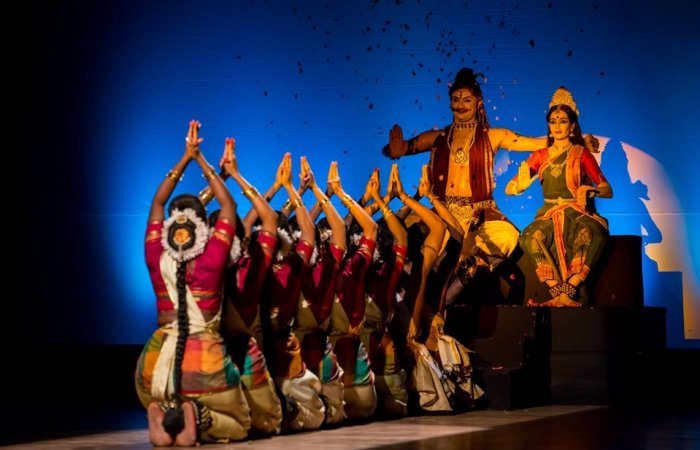 It was mentioned by Vasanthalakshmi that the dance movements, very much in the manner conceived by Guru Narasimhachari were now being executed by male dancers - a change which the Guru would have approved of immensely. The verve and enthusiasm of the presentation with each dancer putting heart and soul into the performance made this not just a fine performance, but the entire evening very memorable. And for me what stood out was how the evening proved the bonding capacity of Art.  Writing on the dance scene for the last forty years, Leela Venkataraman's incisive comments on performances of all dance forms, participation in dance discussions both in India and abroad, and as a regular contributor to Hindu Friday Review, journals like Sruti and Nartanam, makes her voice respected for its balanced critiquing. She is the author of several books like Indian Classical dance: Tradition in Transition, Classical Dance in India and Indian Classical dance: The Renaissance and Beyond. Post your comments Please provide your name and email id when you use the Anonymous profile in the blog to post a comment. All appropriate comments posted with name and email id in the blog will also be featured in the site. |